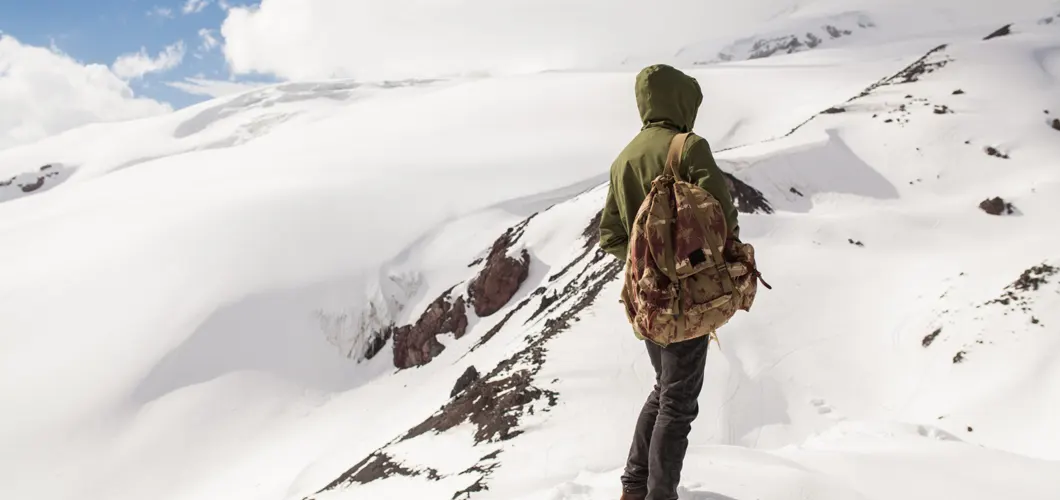

The Hampta Pass Trek, nestled in the Himalayas, is a journey famous for its scenic beauty and moderate challenges. Hampta Pass is one of the famous high-altitude treks offering a blend of lush green flora and fauna, valley, and towering peaks.
Its popularity stems from the diverse landscapes encountered along the route, ranging from dense pine forests to barren, high-altitude deserts. Trekkers are drawn to Hampta Pass for its accessibility, snow, waterfall, and captivating views, making it ideal for both beginners and seasoned adventurers. This combination of stunning scenery and manageable challenges makes the Hampta Pass Trek a beloved destination for outdoor enthusiasts.
1. Why Choose Hampte Pass Trek?
Location and Altitude
Hampta Pass is situated in the Pir Panjal range of the Himalayas, connecting the Kullu Valley with Lahaul and Spiti Valley. The pass itself is located at a high altitude trek of approximately 4,270 meters (14000 feet) above sea level. The trek usually starts from Manali, a famous hill station in Himachal Pradesh.
Difficulty Level And Duration
The Hampta Pass Trek offers a moderately challenging adventure suitable for both novice and seasoned trekkers. Typically lasting 4 to 6 days, the trek’s duration varies based on its difficulty level. Along the trail, trekkers encounter gradual ascents, rocky paths, and possibly snowy stretches near the pass.
Participants need a decent fitness level to handle the altitude changes and daily trekking distances. The trek’s appeal lies in its diverse terrain, showcasing lush valleys and breathtaking mountain vistas. For those who want to experience an introduction to high-altitude trekking, Hampta Pass provides a balanced mix of challenge and scenic beauty.
Best Time to Visit Hampta Pass
The best months to undertake the Hampta Pass Trek are during the summer months of June and July. During this period, the weather is relatively stable, and the trekking conditions are favorable. Due to the post-monsoon months in the year, June to July offers pleasant weather with lush green landscapes.
Whereas, from August to September the weather remains generally good, with clear skies and stunning views of the surrounding mountains. It’s advisable to avoid trekking during the winter months (October to May) due to heavy snowfall and extremely cold temperatures. Overall, the Hampta Pass Trek is renowned for its scenic beauty, and diverse landscapes.
How to Travel to Hampta Pass?

Reaching Hampta Pass begins with journeying to Manali from major cities like Delhi or Chandigarh. From Delhi, you can take a bus or taxi to Manali, a scenic 12-hour drive. Alternatively, fly to Kullu-Manali Airport and reach Manali by road.
Detailed Trek Itinerary
Once in Manali, local transportation options include taxis, auto-rickshaws, or rented cars to reach Jobra, the starting point of the Hampta Pass trek. This 2-hour drive winds through picturesque landscapes. The trek then spans around 5 days, leading you through diverse terrains to the breathtaking Hampta Pass, offering stunning views of the Himalayas.
Arrival in Manali
To reach Manali, a stunning town in the Himalayan foothills, begin your Chandigarh to Manali journey, the closest route. After settling in at your accommodation, you’ll attend a pre-trek briefing with your guide and fellow trekkers, covering safety protocols and itinerary details. Take time to acclimate to the altitude and soak in the natural beauty before the adventure begins.
Manali to Jobra to Chika
The trek starts with travel from Manali to Jobra by road (18 kilometers, 1 hour) before trekking 4 kilometers to Chika (2-3 hours). The terrain evolves from forested paths to open trails with mountain views and streams. Camping at Chika offers a serene base amidst breathtaking scenery, ideal for bonding around campfires under starry skies.
Chika to Balu Ka Ghera
The trek from Chika to Balu Ka Ghera follows the scenic Hampta River, offering diverse landscapes and stunning views. The trail’s tranquility is enhanced by the river’s soothing sounds. As you approach Balu Ka Ghera, witness dramatic vistas of snow-capped peaks, making this trek a memorable journey through the captivating Himalayan wilderness.
Balu Ka Ghera to Shea Goru
The highlight is reaching Hampta Pass at 14,100 feet, a challenging climb with rocky terrain and steep inclines. Despite the difficulty, the panoramic views from the pass are immensely rewarding. Descending to Shea Goru, we traverse meadows and alpine flora, completing a high-altitude trek that combines breathtaking scenery covered with snow with physical challenge and a deep connection to nature.
Additional Tips and Recommendations
Permits and Regulations
To embark on the Hampta Pass trek, you’ll need to obtain the necessary permits. Ensure you have the required entry permits and comply with conservation guidelines to minimize your impact on the environment. Stay updated on any regulations regarding waste disposal and campsite usage to help preserve the natural beauty of the region.
Accommodation and Facilities
During the trek, you’ll find various camping options along the route. It’s advisable to bring your camping gear, including tents and sleeping bags. Consider booking your accommodation in advance, especially during peak trekking seasons, to ensure availability.
Food and Water Sources
Food and water are essential considerations for the Hampta Pass trek. Carry lightweight, nutritious meals that are easy to prepare at camp. It’s recommended to carry a portable water filter or purification tablets to treat water from natural sources like streams. Ensure you stay hydrated by drinking plenty of water throughout the trek, especially at higher altitudes.
Conclusion
In conclusion, embarking on the Hampta Pass trek promises an unforgettable adventure amidst the Himalayan splendor. This guide has illuminated key aspects to consider before setting out. Understanding the diverse terrain, ranging from lush forests to barren landscapes prepares trekkers for the journey’s physical demands. Acclimatization to the altitude is crucial, ensuring safety and enjoyment. Packing essentials like sturdy gear, warm clothing, and ample provisions is vital for a comfortable trek. Additionally, the trek’s seasonal nuances impact scheduling, emphasizing the significance of planning. Above all, the Hampta Pass trek offers a remarkable experience for nature enthusiasts and adventurers alike, showcasing nature’s grandeur in the heart of the Indian Himalayas.
